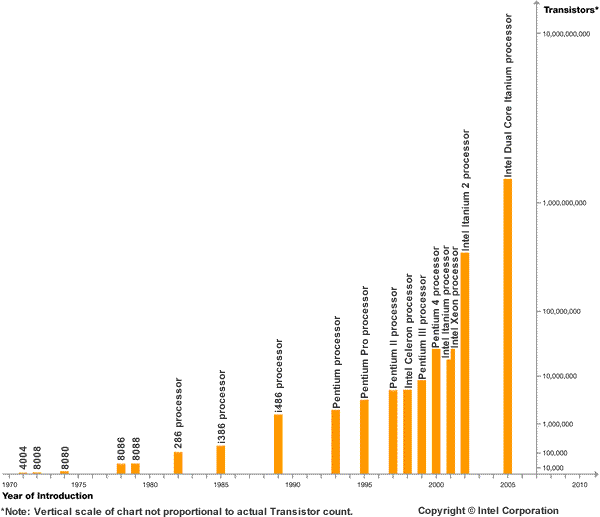Microprocessor Design and the ARM
Approaches to microprocessor design
Microprocessor design is a series of complex interrelated problems ranging from physical constraints to market forces. Successful microprocessor design is not static. It is an ongoing process of improvement and refinement, which strives to deliver new processors that are smaller, faster, cheaper, and/or require less power than their predecessors and their competitors.
Digital electronics is advancing at a phenomenal pace resulting in exponential increases in processor performance. New processors are four times faster than the processors of three years ago. Today's CMOS circuits are heading towards their physical limits - tomorrow's engineers (that's you!) may use clever tricks to sidestep these limits or bring new underlying technologies into the mainstream.
Moore's Law: Exponential increase of transistor numbers with time.

A favourite example, courtesy of Intel, is to compare the airline industry to the computer industry. In 1978, a flight from New York to Paris would have cost 900 US dollars and taken seven hours. If air travel had improved as exponentially as microprocessors, the same flight would now cost less than a single penny and take a quarter of one second.
